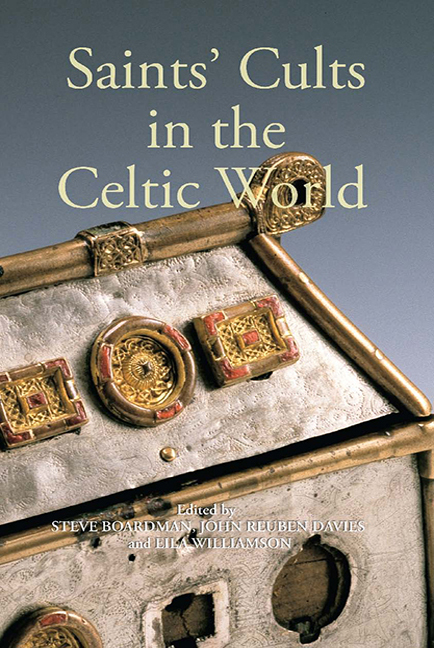Book contents
- Frontmatter
- Contents
- List of Illustrations
- List of Contributors
- Abbreviations
- Editors’ Preface
- 1 Rochester, Hexham and Cennrígmonaid: the movements of St Andrew in Britain, 604–747
- 2 The cults of Saints Patrick and Palladius in early medieval Scotland
- 3 Personal names and the cult of Patrick in eleventh-century Strathclyde and Northumbria
- 4 Bishop Kentigern among the Britons
- 5 Adjacent saints’ dedications and early Celtic History
- 6 Cuthbert the cross-border saint in the twelfth century
- 7 David of Scotland: ‘Vir tam necessarius mundo’
- 8 The cult of Saint George in Scotland
- 9 The cult of the Three Kings of Cologne in Scotland
- 10 The medieval and early modern cult of St Brendan
- General Index
- Miscellaneous Endmatter
2 - The cults of Saints Patrick and Palladius in early medieval Scotland
Published online by Cambridge University Press: 11 May 2017
- Frontmatter
- Contents
- List of Illustrations
- List of Contributors
- Abbreviations
- Editors’ Preface
- 1 Rochester, Hexham and Cennrígmonaid: the movements of St Andrew in Britain, 604–747
- 2 The cults of Saints Patrick and Palladius in early medieval Scotland
- 3 Personal names and the cult of Patrick in eleventh-century Strathclyde and Northumbria
- 4 Bishop Kentigern among the Britons
- 5 Adjacent saints’ dedications and early Celtic History
- 6 Cuthbert the cross-border saint in the twelfth century
- 7 David of Scotland: ‘Vir tam necessarius mundo’
- 8 The cult of Saint George in Scotland
- 9 The cult of the Three Kings of Cologne in Scotland
- 10 The medieval and early modern cult of St Brendan
- General Index
- Miscellaneous Endmatter
Summary
The two churchmen who stand ‘at the door of Irish history’ have received much scholarly attention over the years, amounting to a sizeable sub-discipline within Irish history and Celtic studies. The two are mirror images one of the other: for Patrick we possess his own impressive and moving words, from the twin documents called the Confession and the Letter to Coroticus. He is the earliest insular churchman for whom we can frame any real biographical and personal detail. Alas, this is unmatched by any chronological security, or contemporary documents external to his own writings, and the historical and autobiographical Patrick thus floats relatively free in a troubled sea of time that includes most of the fifth century. Palladius is the opposite. To some extent, he is merely a chronological datum, fixed in time, but otherwise disembodied. In AD 431, according to Prosper of Aquitaine, the bishop Palladius was sent to be the first bishop of the Irish Christians. We know little more than this, although recent work, especially by Thomas Charles-Edwards and Dáibhí Ó Cróinín, has helped to flesh out his world and the anti-Pelagian context of his mission, and Ó Cróinín has made a convincing case for identifying with Palladius a historical character in an important early fifth-century poem, which reveals something of his (misspent?) youth and background.
For all the uncertainties surrounding Ireland's Christian foundations, Scotland can feel entitled to a bit of righteous jealousy. The evidence for these two, and what it reveals, is certainly much more than we know about anything contemporarily in Scotland. At some point in the middle ages, scholars put that righteous jealousy into action, and brought both these churchmen into contact with Scotland in writings about them. These writings have tended to fall victim to the perennial attitude towards hagiography in modern Scottish historiography, which views it as a quarry for historical facts. In this context, the claim made in lives of St Patrick that his birthplace was near Dumbarton has been noticed, but even while acknowledging that the list of candidates for Patrick's birthplace is inexhaustible, and establishing even a good short-list implausible, few would support its historicity, and so it is passed over fairly quickly.
- Type
- Chapter
- Information
- Saints' Cults in the Celtic World , pp. 18 - 41Publisher: Boydell & BrewerPrint publication year: 2009

